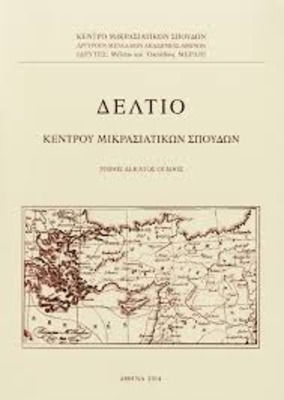Συμβολή στην ερμηνεία των μικρασιατικών στοιχείων της τέχνης του δέκατου αιώνα στη Μάνη
Part of : Δελτίο Κέντρου Μικρασιατικών Σπουδών ; Vol.5, 1984, pages 71-93
Issue:
Pages:
71-93
Parallel Title:
A contribution to the interpretation of the "Oriental" features in the art of the 10th century in Mani
Section Title:
Articles
Author:
Abstract:
Some features of the architecture and wallpainting of 10th century Byzantinechurches in Mani (SE. Peloponnese), can be interpreted as «oriental». These features are the following: 1) the double apsidal simplebarrel-vaulted church of which the earliest dated monument is the churchof Saint Panteleimon at Boularioi (991/2); 2) the masonry templon witharch opening. The above two features are found earlier in Cappadocia; 3)the large open porch in front of the west façade of the church of Asomatosabove Ritta (10th century). This type of porch has only earlier parallelin Georgia (c. 600); 4) the dome with ribs which forms a cross of thesame church. This type of dome-ribs also occurs in Georgia and Cappadocia;and 5) The stylistic and iconographie affinities between the wallpaintingsof the 10th century in Mani and Cappadocia.These «oriental» features appear to have been imported into Mani fromthe East by members of the monastic movement of the 10th century.Many monks from Asia Minor were sent to Greece after the Byzantinevictory over the Arabs (961) to reintroduce Christianity. Among thesemonks two became famous for their building activities, Saint Athanasiosthe Athonite and Saint Nicon the Metanoite. The latter was particularlyactive in the region of Laconia, where many tenth century buildingscan be connected with his missionary activity.
Subject:
Subject (LC):




